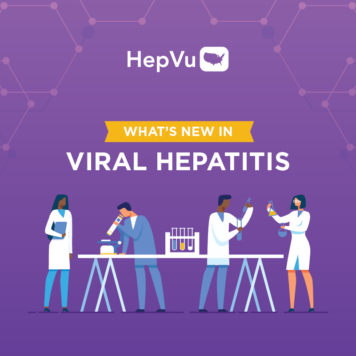Q: What effect do current federal actions (executive, legislative, and judicial) and threatened federal funding cuts have on efforts to eliminate viral hepatitis nationwide?
Emalie Huriaux, MPH serves as the Program Manager for Integrated Infectious Disease Testing, Viral Hepatitis Prevention, and Drug User Health at the Washington State Department of Health. Working within the Office of Infectious Disease in the Division of Disease Control & Health Statistics, she leads efforts to strengthen public health programs that expand testing access, prevent viral hepatitis, and improve health outcomes for people who use drugs.
Eliminating the public health threat of viral hepatitis depends on strong public health surveillance and on people having access to evidence-based preventive services and health care. Potential funding cuts to the national public health system threaten efforts to monitor viral hepatitis trends and our collective progress toward elimination. Recent federal actions have sent mixed messages about the safety and efficacy of vaccines, such as the Hepatitis B vaccine, which undermines efforts to eliminate Hepatitis B in the United States. In the case of Hepatitis C, because there is no vaccine to prevent the virus, three things are essential to achieve elimination: First, access to harm reduction services that prevent Hepatitis C transmission, such as syringe service programs and medications for opioid use disorder; second, access to screening and testing services to identify people living with the virus; and third, access to direct-acting antiviral medications that cure people in 8-12 weeks. A recent executive order derides harm reduction efforts and recent federal actions may lead to significant cuts to Medicaid, essential health coverage for people who need access to vaccinations, medications for opioid use disorder, Hepatitis B and C screening and testing, and Hepatitis B and C antiviral medications.
***
Prabhu Gounder, MD, MPH is Medical Director for the Viral Hepatitis Unit at the Los Angeles County Department of Public Health. He oversees programs focused on preventing and controlling viral hepatitis, with a strong emphasis on public health surveillance, community engagement, and equitable access to care.
CDC viral hepatitis funding has allowed the Los Angeles County Department of Public Health to establish a countywide person-level HCV registry for the first time. This registry allows us to answer basic but important questions such as how many LA County residents have been diagnosed with HCV and how many are known to have been cured. This information helps inform policymakers and community partners on progress towards HCV elimination. We have also been able to leverage the registry for data-to-action partnerships to link residents with HCV to care. Viral hepatitis has historically been underfunded relative to other public health concerns and any reduction in funding threatens our capacity to maintain the progress we have made in recent years.
***
Jennifer Havens, PhD, MPH is a Professor of Behavioral Science at the University of Kentucky College of Medicine. Her research focuses on substance use, rural health, and infectious disease epidemiology, with a particular emphasis on understanding and addressing the intersections of opioid use, HIV, and Hepatitis C in rural Appalachian communities. She leads community-based longitudinal studies that inform prevention and treatment strategies to improve health outcomes in underserved populations.
With the availability of POC testing and fewer Medicaid restrictions, models of care are emerging that may guide HCV elimination efforts in the U.S. HCV epidemiology points to a disparity in the number of incident HCV infections and cures among people who use drugs, as new infections outpace those treated. Reaching people who inject drugs should therefore be a priority for HCV treatment. However, Medicaid, risk reduction programs, and community services that serve people who inject drugs are under constant threat, as are people who inject drugs themselves. This uncertainty makes it exceedingly difficult to implement a cohesive national strategy for HCV elimination.




